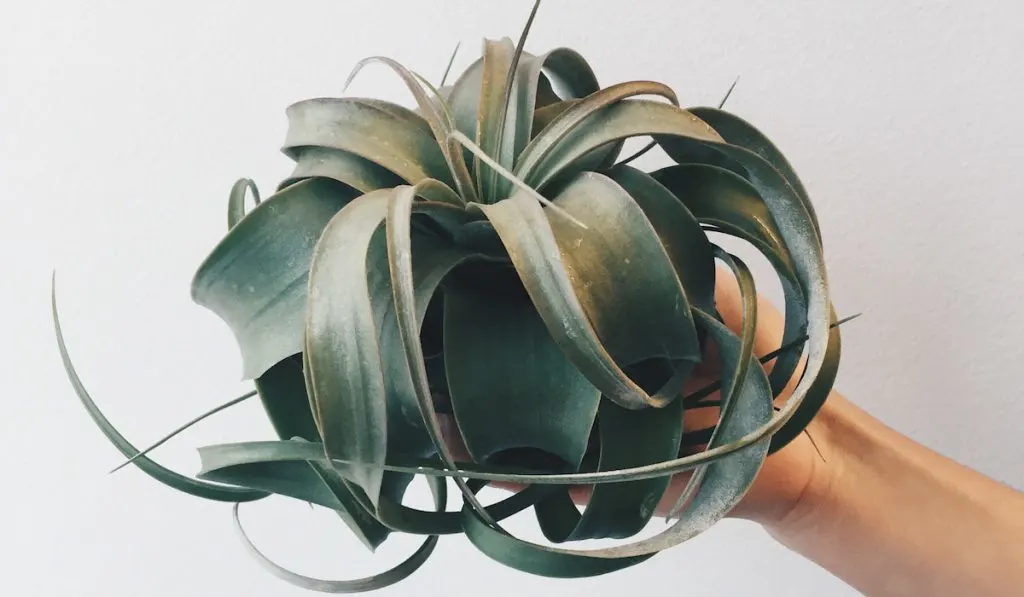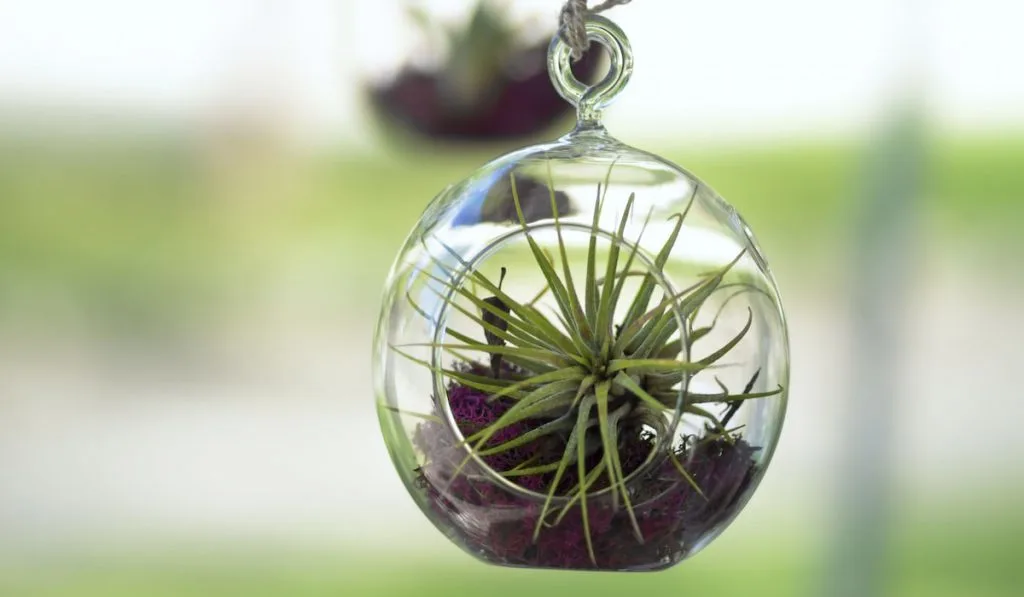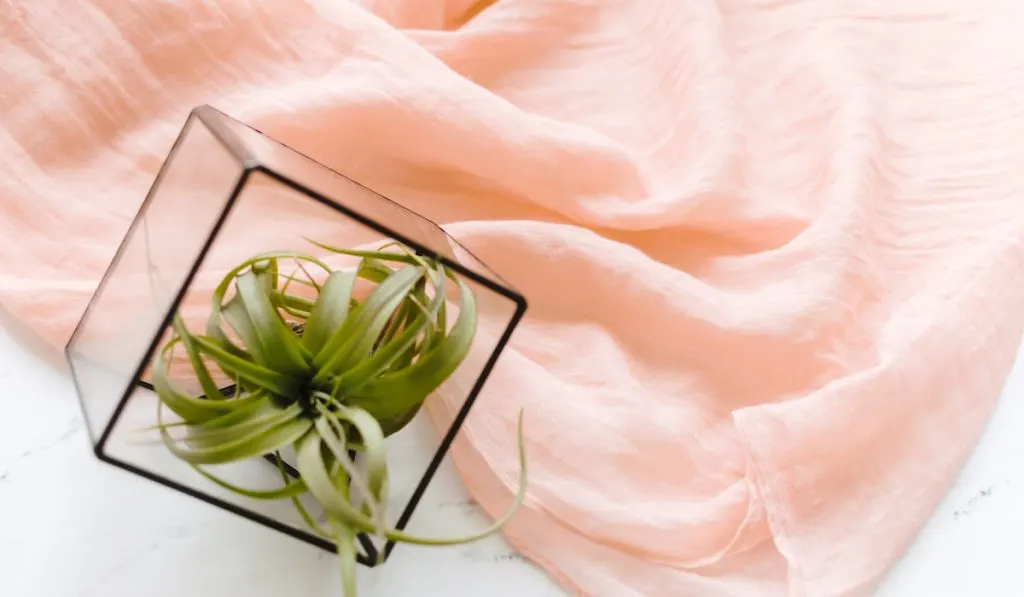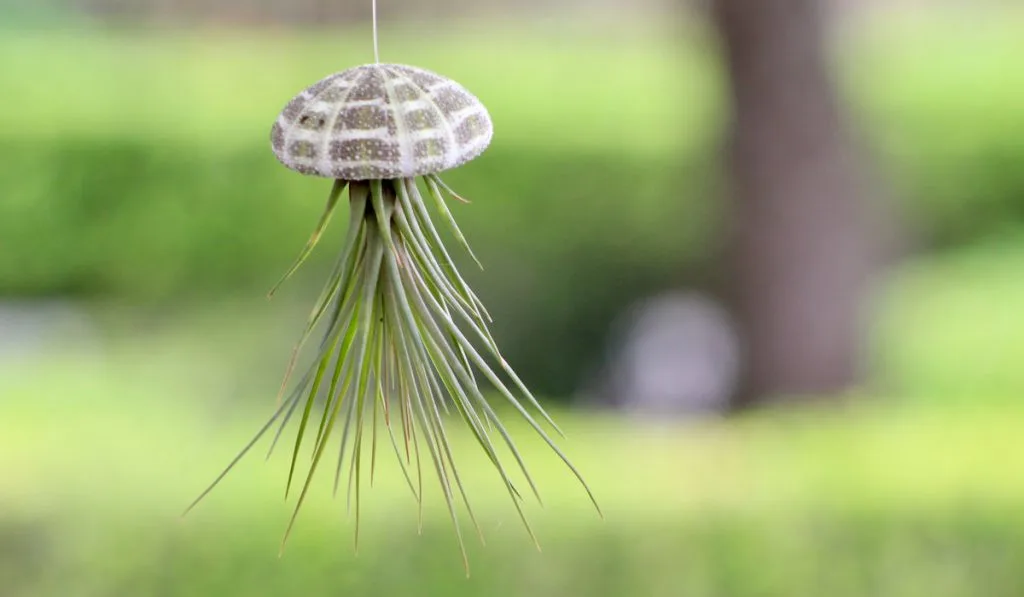Do you have air plants? Air plants, though easy to care for, have specific requirements to grow. One major factor to consider when growing air plants is the amount of light that they need.
How much light do air plants need? What are other requirements of air plants?
Air plants need full sun. This means 6 or more hours of sunlight daily.
Air plants, however, do not do well in direct sunlight, so you need to place them in shaded locations. Air plants can also grow under twelve hours of full-spectrum grow lights.

Why are air plants so special? What are awesome air plant facts? Read this article.
Basic Care Requirements of Air Plants
Air plants need the right conditions to grow well. Here are the basic requirements of air plants:
1. Light
Air plants with green and soft leaves need less light than non-green and stiff-leafed species. In their natural habitat, air plants receive full light, but indirectly.
This means that air plants receive more than 6 hours of light, but the canopy of trees prevents direct sunlight from reaching them.
In your home, you should grow your air plants in shaded places that receive six or more hours of light.
Do not place air plants on west-facing windowsills, especially during summer.
Can you grow air plants with grow lights? Of course. Use 12 hours of full-spectrum light that is placed 3 feet (or less) above the plant. Air plants thrive well under grow lights.
2. Humidity
The humidity requirement of air plants depends on the species. Air plant species with thinner leaves need more humidity than those with thicker leaves.
If your air plant species require high humidity, you should mist it regularly. You should purchase air plant species that grow well in conditions you can give it.
3. Temperature
Air plants need temperatures that range from 50°F to 90°F (10°C to 32°C) according to the species. The ideal temperature range for most species, however, range from 68°F to 77°F (20°C to 25°C). If the room is too hot, you can install fans in the room to help lower the temperature.
4. Watering
Air plants are easy to water. You should water them no more than four times weekly. Make sure that the plant is allowed to dry out first before you water again. Here are two ways to water your air plant:
- Misting: “Misting” means to spray water on the leaves and body of air plants. You should mist the plants until the water starts to run off before you stop.
- Soaking: To soak your air plants, fill a bowl with water and then submerge the plant in the bowl for 1-2 minutes. Do not soak it for long as it is easier to kill air plants by overwatering than not watering enough.
Which watering method is best for your air plant? It depends on the species.
Air plant species with thicker leaves should be misted while those with thinner leaves should be soaked. Expert air plant gardeners, however, can practice both soaking and misting because they know when to stop.
5. Nutrients
Air plants can survive on their own without fertilizer if you use rainwater to water them and allow a natural breeze to reach them.
If you want to give nutrients to your air plants, however, use a water-soluble bromeliad or orchid fertilizer. You can give fertilizer to your air plants by misting (i.e. foliar fertilizer technique).
Make sure that you apply the care tips above so that your air plants can grow without issues.

Awesome Facts About Air Plants
Want to know why air plants are so special? Here are a few air plant facts:
1. Air Plants Feed with Their Leaves
Unlike other plants, air plants mostly use their leaves to absorb nutrients. They absorb nutrients with their leaves through small hair-like structures called trichomes. They collect nutrients from dust, debris, dead leaves, etc. The main purpose of the root of air plants is for anchorage.
2. They Make Great Indoor Plants Because They Release Oxygen at Night
Air plants photosynthesize by a type of photosynthesis called crassulacean acid metabolism (CAM) photosynthesis.
With this type of photosynthesis, air plants use sunlight to produce energy (just like other plants) but they wait till the night before they exchange gases. This means that oxygen (which is a by-product of photosynthesis) is released at night.
For this purpose, air plants make awesome indoor plants.
3. Air Plants Are Related To Pineapples
Remember that air plants photosynthesize by crassulacean acid metabolism (CAM) photosynthesis. Do you know another plant that uses CAM photosynthesis as well?
Pineapples. Air plants and pineapples are in the same taxonomic family, Bromeliaceae. Look at the leaves of your air plants and also the leaves of pineapples. Do you see the resemblance?
4. There are Around 650 Species of Air Plants
In the 650 species of air plants, about 635 are epiphytes. All the species of air plants are in the genus Tillandsia, but are separated into the following subgenera:
- Tillandsia subg. Allardtia
- Tillandsia subg. Tillandsia
- Tillandsia subg. Phytarrhiza
- Tillandsia subg. Anoplophytum
- Tillandsia subg. Pseudo-Catopsis
- Tillandsia subg. Pseudalcantarea
- Tillandsia subg. Diaphoranthema
Did you know any subgenera of air plants before now?
5. Air Plants Are Threatened
Many air plant species are threatened due to loss of habitat and other human activities such as over-collecting. The population of threatened species replenishes slower than the rate at which they decline.
Luckily, people who export air plants are now asked to prove that their plants are nursery-grown and not collected from the wild.
When you are buying air plants from other countries, make sure that your seller is certified to sell air plants for exportation.
Awesome facts about air plants, right?

Related Questions and Answers
I know that you may have a lot of questions about air plants. Don’t worry, here are the answers:
1. Will Your Air Plant Produce Fruits? How?
Air plants make pups instead of fruits. Air plants can grow for 3 or more years before producing flowers. They have complete flowers, so their flowers have both male parts (anthers) and female parts (stigmas).
Even though air plants produce complete flowers, most species are not self-fertile, so they need pollen from the flower of another plant (of the same species) to reproduce.
Air plant flowers can bloom for months. Even the color of the leaves can appear brighter when they bloom to attract pollinators. After a long period of blooming, new plants called “pups” will appear below the mother plant.
After blooming, the mother air plant dies and the pups continue to grow.
2. Why are the Green Leaves of Your Air Plant Becoming White?
If the green leaves of your air plants are becoming white, you should reduce how much light can reach the plants. According to the species, air plants can change the color of their leaves to match how much light they receive.
Many green-leaf species can tolerate a low amount of sunlight because the green color is a sign of chlorophyll and chlorophyll absorbs the most sunlight.
If the amount of light received by your plants is becoming too much, however, the chlorophyll will reduce and cause the leaves to appear white.
To prevent your air plants from dying, reduce the amount of light they receive or grow species that prefer more light.
3. What is the Best Substrate for Your Air Plant?

Of the 650 species of air plants, about 635 are epiphytes or lithophytes. This means that most air plant species do not grow in soil, instead, they anchor themselves on various surfaces.
Great surfaces for your air plants are:
- Tree bark
- Clamshells
- Tree branch
- Rocks and pebbles
- Preserved reindeer moss
There are so many substrate ideas for your air plants.
4. How Do You Prevent Your Air Plants from Dying Due to Rot?
Many people just leave their plants after watering them. Whether you mist or soak your air plants, you should air-dry them. When air-drying your plants, you should turn them upside down for a few hours to allow excess water to drip off the plant.
If the plant does not dry quickly enough, you can use a fan to blow off excess water. If your plants are rotting due to high humidity, you should use a dehumidifier or grow species that can grow in high humidity.
5. Do Indoor Air Plants Attract Bugs?
Except during their flowering stage, indoor air plants do not attract bugs. When they flower, the colors of their flowers and leaves attract pollinators (which are mostly harmless insects).
Have you found the answer to your question?

Final Thoughts
Air plants are plants in the genus Tillandsia. They are mostly epiphytes that need many hours of full, but indirect sunlight. They are awesome plants that can give you extra oxygen at night. Air plants are very easy to care for.
Resources
- https://en.m.wikipedia.org/wiki/Tillandsia
- https://homesteadandchill.com/air-plant-care-101/
- https://www.air-plants.com/a/s/blogs/air-plant-care-and-design-articles/10-interesting-facts-about-tillandsia
- https://www.air-plants.com/blogs/air-plant-care-and-design-articles/14155361-how-much-light-do-air-plants-need
- https://www.sunset.com/garden/keep-your-air-plant-alive-with-these-6-simple-tricks-tillandsia
